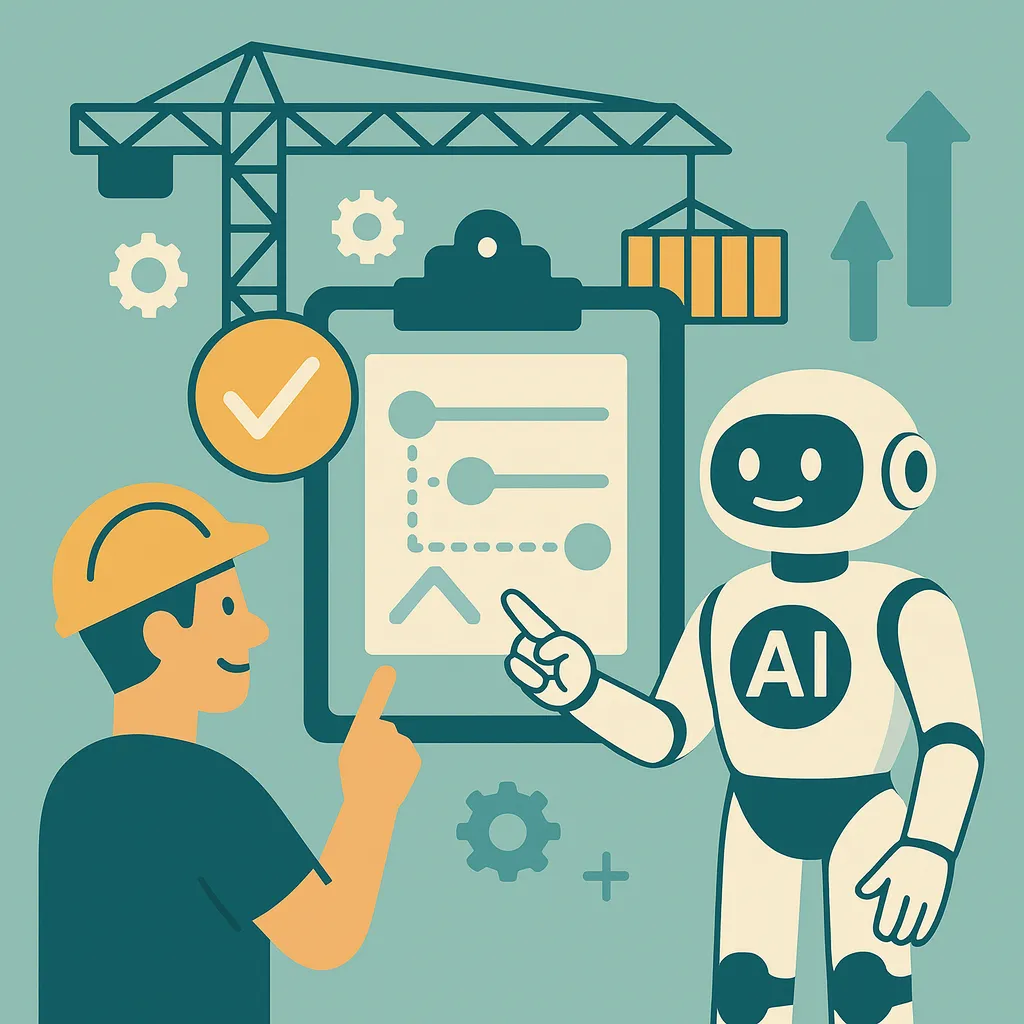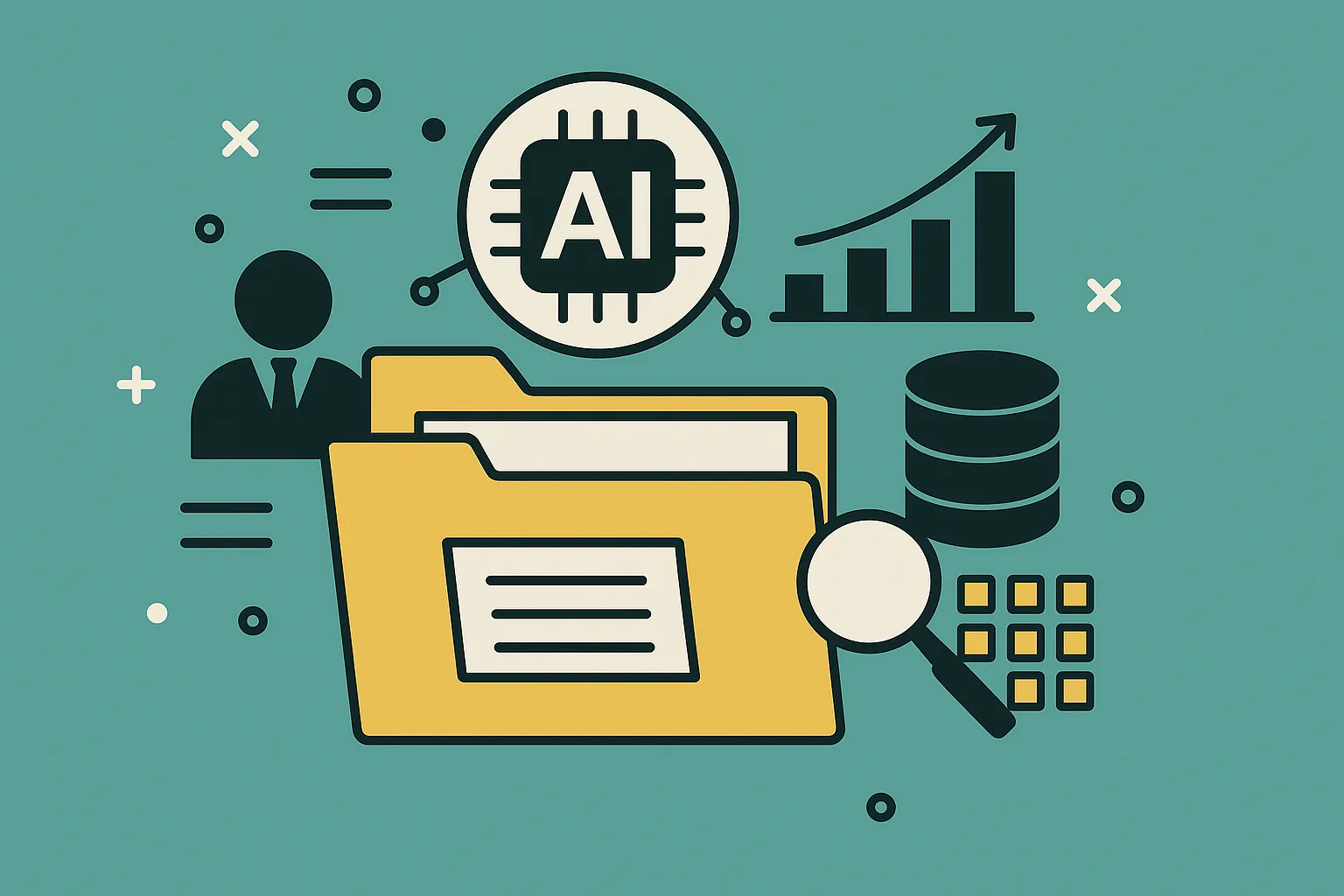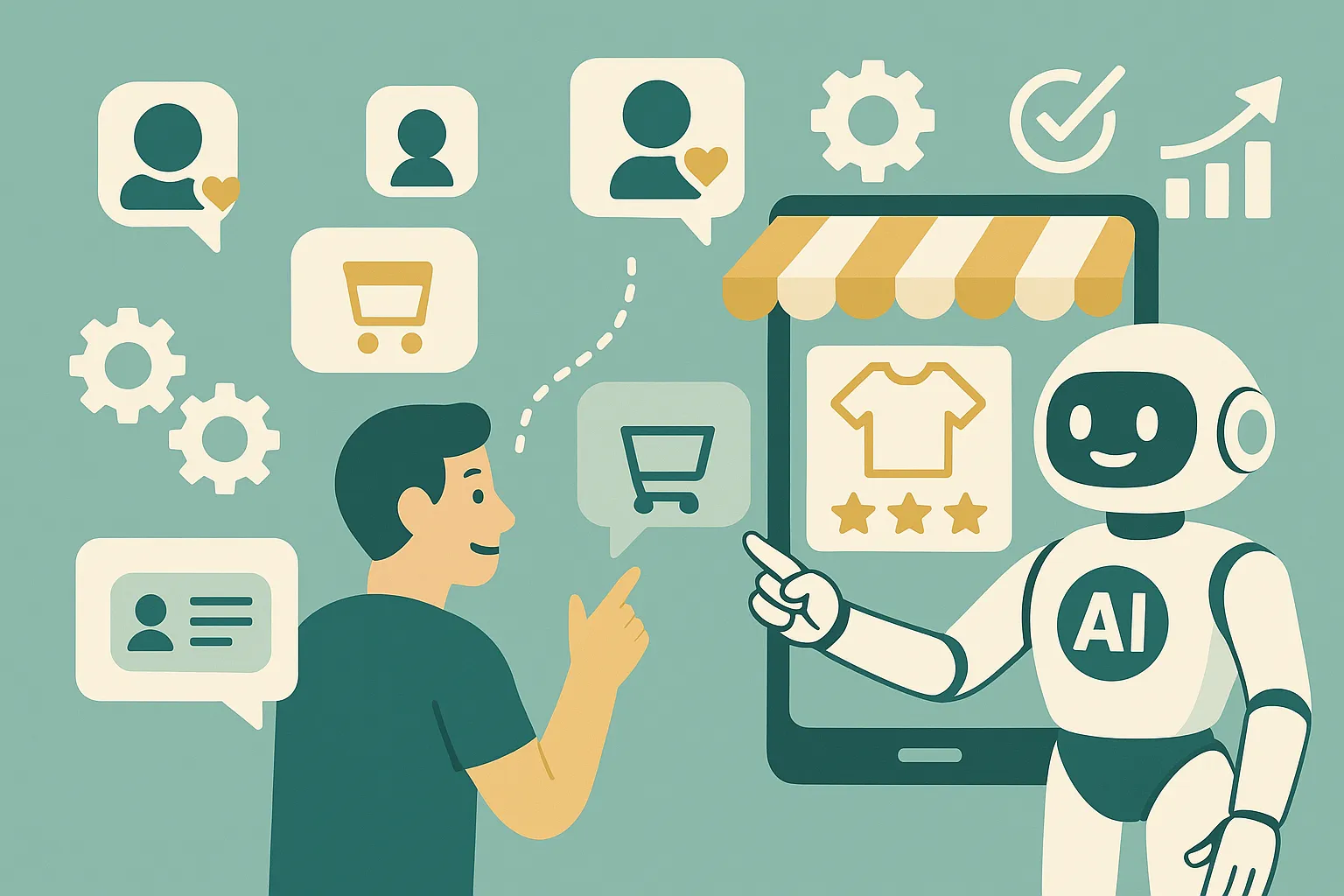Imagine having a crystal ball that could tell you how many customers you’ll have next month, how much inventory you’ll need, or how many employees to hire.
It would let you plan ahead, reduce risks, adjust resources, and maximize profits.
That crystal ball doesn’t exist—but artificial intelligence does. And it’s better than ever at doing exactly that.
Thanks to interactive dashboards, predictive models, and advanced machine learning algorithms, any company can now forecast demand with unprecedented accuracy.
In this article, you’ll discover how AI enables demand forecasting that turns guesswork into strategic planning.
We’ll walk you through the key concepts, explain the tangible benefits it can bring to your business (from inventory optimization to smarter workforce planning), and most importantly, share a step-by-step guide to help you implement your own prediction system.
You’ll also learn which models are most commonly used (Random Forest, XGBoost, Prophet, etc.) and how they integrate with your existing tools (ERP, CRM, or Power BI) to start generating value from day one.
And we’ll share real success stories from Crata AI, where our clients have achieved measurable results such as:
- Less than 2% prediction error
- Over 20% reduction in operational costs
- Up to 80% automation of planning tasks
With AI, anticipating demand is no longer a luxury, it’s the key to staying competitive and growing in today’s market.
How AI Demand Forecasting Works
AI-driven demand forecasting relies heavily on machine learning (ML) a branch of artificial intelligence that learns from historical data to make predictions.
The most common algorithms are supervised learning models like Random Forest, XGBoost, and LightGBM, known for their accuracy in highly variable scenarios, along with classic statistical methods such as ARIMA for time series.
It all starts with data: collected from multiple sources (historical sales, inventory, CRM, external factors), unified and cleaned, and then used to train machine learning algorithms.
A machine learning model is, essentially, a system that learns from past data, identifies patterns invisible to the human eye, and projects them into the future.
It allows you to forecast demand far more accurately than manual estimates or spreadsheets ever could.
In practice, once the model is trained and optimized, the flow is simple:
1. Data feeds the model
2. The model generates predictions
3. The results are displayed in a smart dashboard
These dashboards often integrate with Power BI, Tableau, or Looker Studio, allowing teams to visualize trends and scenarios in real time.
The business then makes faster, smarter decisions.
It’s a process invisible to the user, but with a direct impact on efficiency and profitability.
The final result? Faster, safer, more profitable decisions.
In other words: less guessing, better outcomes.
The Benefits of AI Demand Forecasting
AI-driven demand forecasting doesn’t just improve accuracy, it transforms how your business operates day to day, delivering measurable, tangible results from the start.
Here are the key benefits:
1. Automation of Manual Work
Less workload for your teams, more time for high-value tasks, and a drastic reduction in time spent on manual reports or calculations.
2. Cost and Risk Reduction
Forecasting demand helps prevent both stockouts during peak demand and costly overstocking.
3. Greater Service Capacity
Meet customer demand more effectively, guarantee availability, and stop leaving money on the table due to poor forecasting.
4. Data-Driven Strategic Planning
Make decisions based on facts, not assumptions, leading to clearer direction and stronger business outcomes.
According to McKinsey Digital, AI-based forecasting can reduce errors in supply chains and operations by 30% to 50%, leading to 65% fewer lost sales due to stockouts and 10%–40% lower inventory costs (Smartening up with Artificial Intelligence, McKinsey).
AI is estimated to generate $1.2 to $2 trillion in value in manufacturing and supply chain planning alone (Visualizing the Uses and Potential Impact of AI, McKinsey).
At Crata AI, implementing AI-powered demand forecasting algorithms has allowed our clients to cut operational costs by more than 20% and automate up to 85% of the manual workload related to forecasting, analysis, and planning.
Predictive models can also be combined with optimization algorithms (for purchasing or logistics, for instance), multiplying the economic impact across the entire value chain.
How to Implement an AI Demand Forecasting System Step by Step
Implementing an AI-based demand forecasting system doesn’t mean reinventing your business. It’s about following a structured process—from simple to advanced—that delivers results from day one.
1. Unify Your Data
Gather all relevant information: historical sales, inventory, orders, CRM data, and external factors like weather, holidays, or market trends. The more data you have, the better the prediction.
2. Clean and Prepare
AI models are only as good as the data they receive. Remove duplicates and inconsistencies, and normalize your datasets to ensure quality. Check out our article on how to prepare your data for AI.
3. Analyze Patterns
Before training the model, analyze demand distribution: seasonality, peaks, anomalies, and correlations with external variables.
4. Train and Evaluate the Model
Test different algorithms—from ARIMA to Random Forest, XGBoost, or LightGBM—and choose the one that balances accuracy and efficiency. Evaluate by comparing predictions with actual data.
5. Optimize and Scale
Fine-tune the model iteratively and integrate it with your internal systems. The AI continuously improves as it receives more data.
6. Visualize, Interpret, and Act
Results are displayed in intelligent dashboards that enable managers and teams to make fast, informed decisions about purchasing, logistics, marketing, staffing, or pricing.
Dashboards can even trigger automatic alerts, purchase recommendations, or “what-if” simulations to explore alternative scenarios.
The outcome is a virtuous cycle: less manual work, more agility, and data-driven decision-making.
Once running, your company shifts from intuition to insight. And ultimately, profitability comes down to two things: cutting costs and increasing revenue.
AI demand forecasting impacts both—by avoiding overproduction, delays, or unnecessary purchases, and by capturing every sales opportunity when demand peaks.
That’s how AI turns uncertainty into strategy, and strategy into measurable results.
Success Stories and Real Examples
At Crata AI, we’ve helped companies across hospitality, retail, construction, real estate, and e-commerce implement AI demand forecasting systems that deliver real, measurable gains in efficiency, savings, and growth.
In hospitality, we’ve worked with hotel chains and independent properties to optimize revenue management. With prediction models reaching 98% accuracy, our clients have increased annual revenue by hundreds of thousands of euros through proactive pricing, availability, and staffing adjustments.
In retail, we’ve helped companies anticipate demand surges around key dates like Black Friday or Christmas. Predictive models reduced short-term forecast errors to under 5%, preventing stockouts and lowering costs from overstocking.
In construction, we’ve supported large-scale projects where delays directly affect profitability. With AI-based demand forecasting, companies were able to anticipate material and resource needs, cut delays, and test different scheduling scenarios to stay on track.
These projects prove that AI demand forecasting isn’t theory, it’s practice, results, and competitive advantage.
Our expertise also includes integration with ERPs and analytics platforms, ensuring fast, scalable adoption.
AI Demand Forecasting in Real Estate and Construction
In real estate and construction, delays and cost overruns are among the biggest threats to profitability. Large projects typically finish 20% later and up to 80% over budget (The Next Normal in Construction, McKinsey).
Every extra day means higher costs, penalties, and lost trust from clients and investors.
AI demand forecasting becomes a strategic asset: it helps anticipate material needs, account for external factors like weather, inflation, or regulatory changes, and adjust procurement and project planning to minimize deviations.
By training predictive models on historical project data and external variables, companies can simulate different scenarios and explore options before making critical decisions.
The result: fewer risks, better resource utilization, and projects that run with greater control and predictability.
According to the World Economic Forum, adopting digital and AI-based technologies can reduce delivery times by up to 30% and costs by around 15% (Shaping the Future of Construction, WEF).
At Crata AI, we’re developing specialized models for Miranda AI, our predictive intelligence solution for construction planning, which integrates AI with tools like Primavera P6, MS Project, and BIM—cutting thousands of planning hours.
AI Demand Forecasting in Hospitality
In hospitality, just a few points of occupancy or RevPAR can make the difference between a great season and a mediocre one.
Traditional revenue management systems require hours of manual analysis, but AI forecasting enables real-time optimization.
At Crata AI, we’ve implemented models that achieve 98% accuracy in predicting hotel demand, resulting in annual revenue gains worth hundreds of thousands of euros for clients now adjusting prices, availability, and staffing proactively.
These models integrate seamlessly with PMS and channel managers, automatically updating rates and availability based on demand forecasts.
Beyond revenue, AI dramatically reduces the operational load on revenue management teams—freeing up time for strategy and improving guest experience through smarter management.
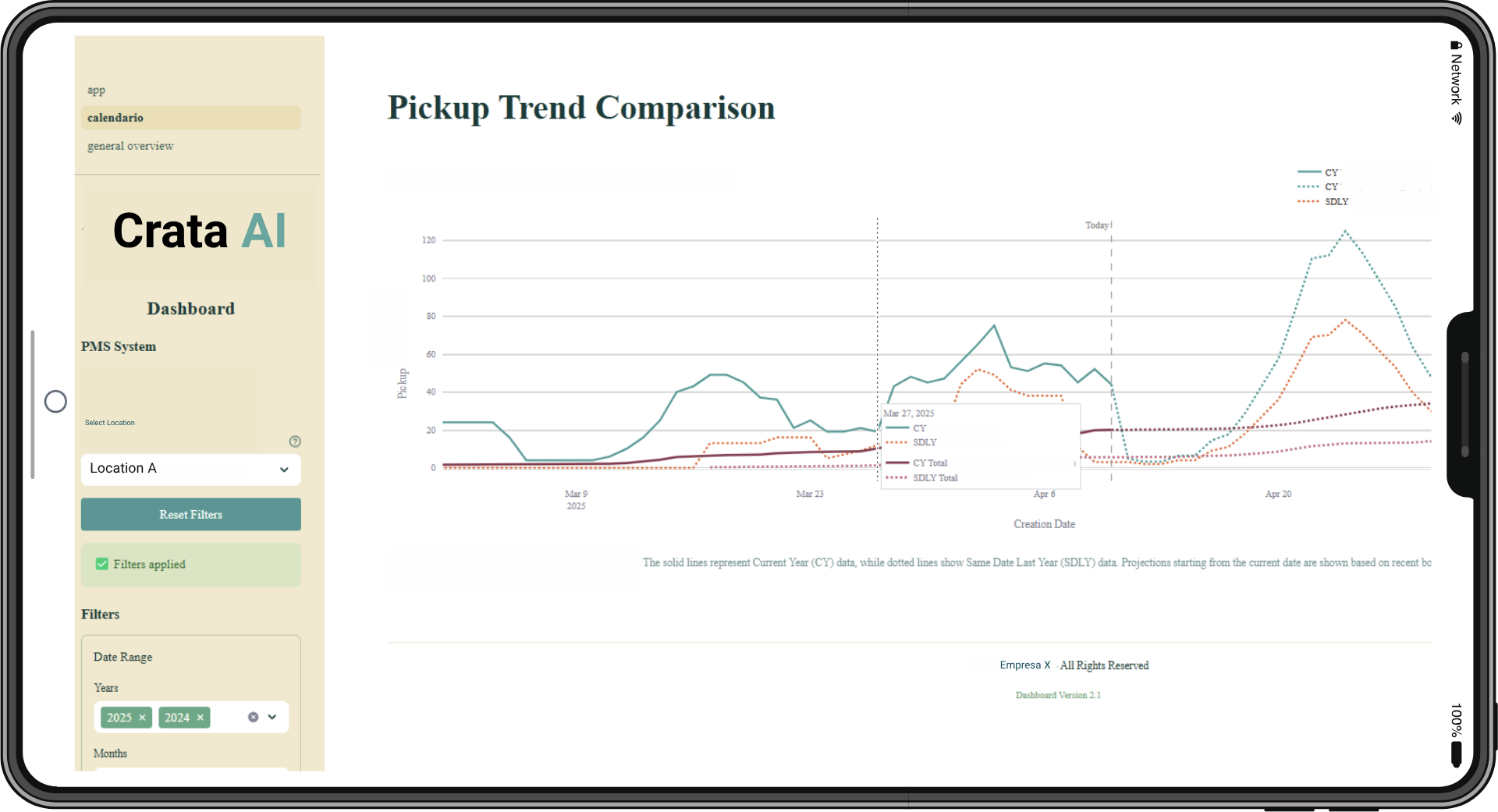
AI Demand Forecasting in Retail
In retail, poor forecasting is expensive: stockouts mean lost sales, while overstocking ties up capital and increases storage costs.
AI demand forecasting helps anticipate and manage peaks like Black Friday, Christmas, or sales seasons, balancing product availability and inventory turnover.
It also helps with workforce planning and logistics adjustments, matching real market needs.
Additionally, models can be connected to POS and ERP systems to automate restocking or trigger marketing campaigns based on predictions.
At Crata AI, our projects have helped retailers optimize resource and inventory planning with forecast errors below 5%, resulting in higher sales and less tied-up capital.
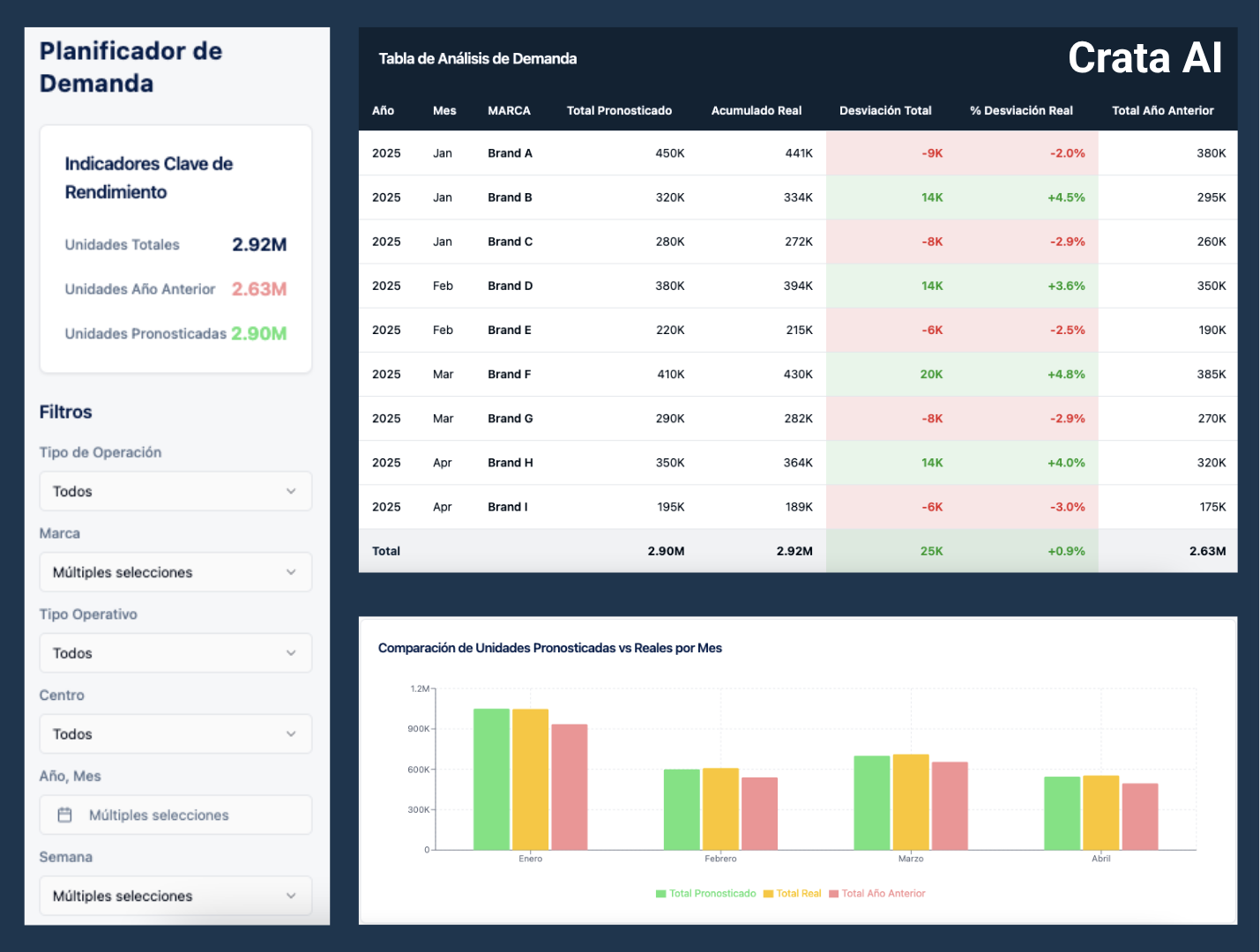
AI Demand Forecasting for E-Commerce: The Hack to Boost Your Sales
E-commerce thrives on anticipating what customers want and having it ready at the right time.
Here, AI demand forecasting is more than an inventory tool—it’s a sales growth engine.
By analyzing browsing and purchase history, marketing campaigns, and external factors, predictive models automatically adjust offers, promotions, and restocking.
That means fewer abandoned carts, higher conversion rates, and a smoother customer experience that drives repeat business and loyalty.
Implementing demand forecasting in e-commerce means shifting from reacting to anticipating market changes—with a direct impact on revenue and working capital optimization.
Learn more about how to use AI to increase e-commerce conversion in our article:How to Improve Your Company’s Conversion with AI.
Get Started Today
AI demand forecasting isn’t just a trend—it’s a competitive edge already being leveraged by leading companies across industries.
At Crata AI, we offer a free assessment to evaluate your business’s AI potential: we identify where it can create the most impact, estimate cost savings or revenue increases, and outline how to implement it quickly and effectively.
Book your first session today and start transforming how your company plans, decides, and grows.
Conclusion
AI-powered demand forecasting turns uncertainty into strategy.
It enables businesses in retail, hospitality, e-commerce, real estate, and construction to make data-driven decisions, minimize risk, and multiply results.
In an increasingly competitive market, anticipating the future isn’t a luxury, it’s a necessity.
With Crata AI’s experience, the power of predictive models, and a proven methodology, you can move from reacting to anticipating, and turn planning into a true competitive advantage.
The real question isn’t if you’ll implement AI in your business, but when.
And the sooner you do, the sooner you’ll see the results.
.webp)
.png)
